Is it too late to start when you are in your fifties? Recommendations for supporting a career that begins in your forties
What companies should do to help middle-aged and senior workers make progress
Release Date 07/28/2018
※This article is a machine translation.
It is expected that the promotion of progress-related action for middle-aged and senior workers in their forties to their sixties will help companies improve productivity. What sorts of initiatives should companies carry out to achieve progress for middle-aged and senior workers?
In a survey report released previously, entitled “Hints for ‘age-reversed management’ required of younger supervisors overseeing middle-aged and senior subordinates in their forties to sixties.Looking to the day when supervisors will be younger and subordinates will be older”, we introduced ways to promote progress for the sluggish type that accounts for approximately 40 percent of all middle-aged and senior workers from the standpoint of supervisor management and the fact that management based on the delegation of authority to subordinates by which a supervisor accepts the way a worker performs assigned work and entrusts the worker accordingly is effective for all middle-aged and senior age brackets. Next, in this issue let us look at the career support that companies should provide in order to promote progress for sluggish-type workers, which was revealed in our fact-finding survey on progress for middle-aged and senior workers as administered to 2,300 workers in their forties to sixties. (See below for an outline of this survey.)

In this “Project to Explore Progress from the Middle”,
the terms “middle-aged” and “senior” are defined as follows: “middle-aged”: 40 to 54 years old, “senior”: 55 to 69 years old
- Personal career awareness undergoes major changes in the 40s
- The key to the success of middle-aged and senior workers is a shift towards “internal careers“
- Career support required for a shift to “internal career”
- (Summary) Companies should provide career support from the early 40s, the gateway for middle-aged and senior workers
1. Personal career awareness undergoes major changes in the 40s
Swiss psychologist Carl G. Jung likened a person's life to the path of the sun over the course of a day, and called the 40s “the noon of life”. This period, when people are approaching the halfway point of their lives, is also known as the “mid-life crisis”, as many people experience changes in their attitudes and values towards work and their careers.
So, what kind of changes are occurring in the career awareness of middle-aged and senior workers in their 40s to 60s? Before considering career support for companies, let's first check out the characteristics of individual career awareness.
Figure 1: Changes in attitudes towards career advancement
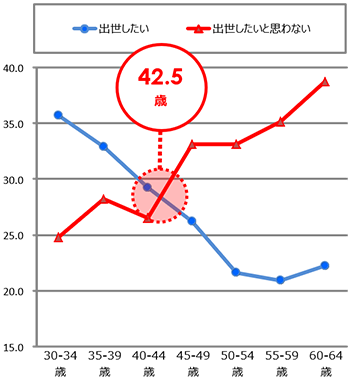
The most prominent characteristic seen in people in their 40s is the change in attitudes towards career advancement. According to the “2017 Survey of Working People's Growth Conditions” conducted by Persol Research and Consulting in 2017, the percentage of individuals within an organization who have the desire to “move up the ladder” decreases with age, and it is understood that the number of respondents who “do not want to move up the ladder” exceeds the number of respondents who “do want to move up the ladder” after the age of 42.5 (Figure 1)
Figure 2: Changes in attitudes towards the end of one's career
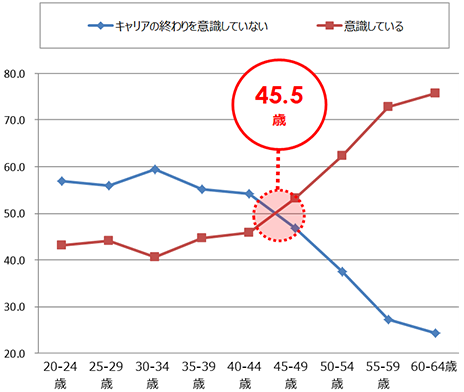
Furthermore, it can be said that one of the characteristics of this period is that people begin to become aware of the “end of their career”. According to the same survey, the age at which the percentage of people who are aware of the end of their careers overtakes the percentage of those who are not becomes 45.5 years old (Figure 2).
2. The key to the success of middle-aged and senior workers is a shift towards “internal careers“
Up to this point, we have seen that there are significant changes in the way individuals think about ‘success’ and ‘the end of their careers’ in their early to mid-40s, which is the gateway to middle-aged and senior workers.
So what kind of career awareness is common to individuals who are making rapid progress? The results of a survey of 2,300 middle-aged and senior workers in their 40s to 60s (Figure 3) show that “awareness of contributing to society”, “a sense of personal growth through work” and “self-efficacy in work” have a positive impact on the career awareness of individuals in their 40s who are making rapid progress. In this way, the attitude of viewing work based on its significance to society and its sense of reward for oneself is called an “internal career view”. As the “internal career view” also has a positive impact on the actions of those in their 50s and beyond, such as improving their expertise through work, it is clear that it is an important career awareness that encourages the actions of middle-aged and senior workers in their 40s to 60s. On the other hand, it has been found that the “external career perspective”, which is oriented towards positions and posts that are easy to see, such as promotion and advancement, does not have a positive impact on the advancement of any age group.
Figure 3: Career awareness that encourages advancement
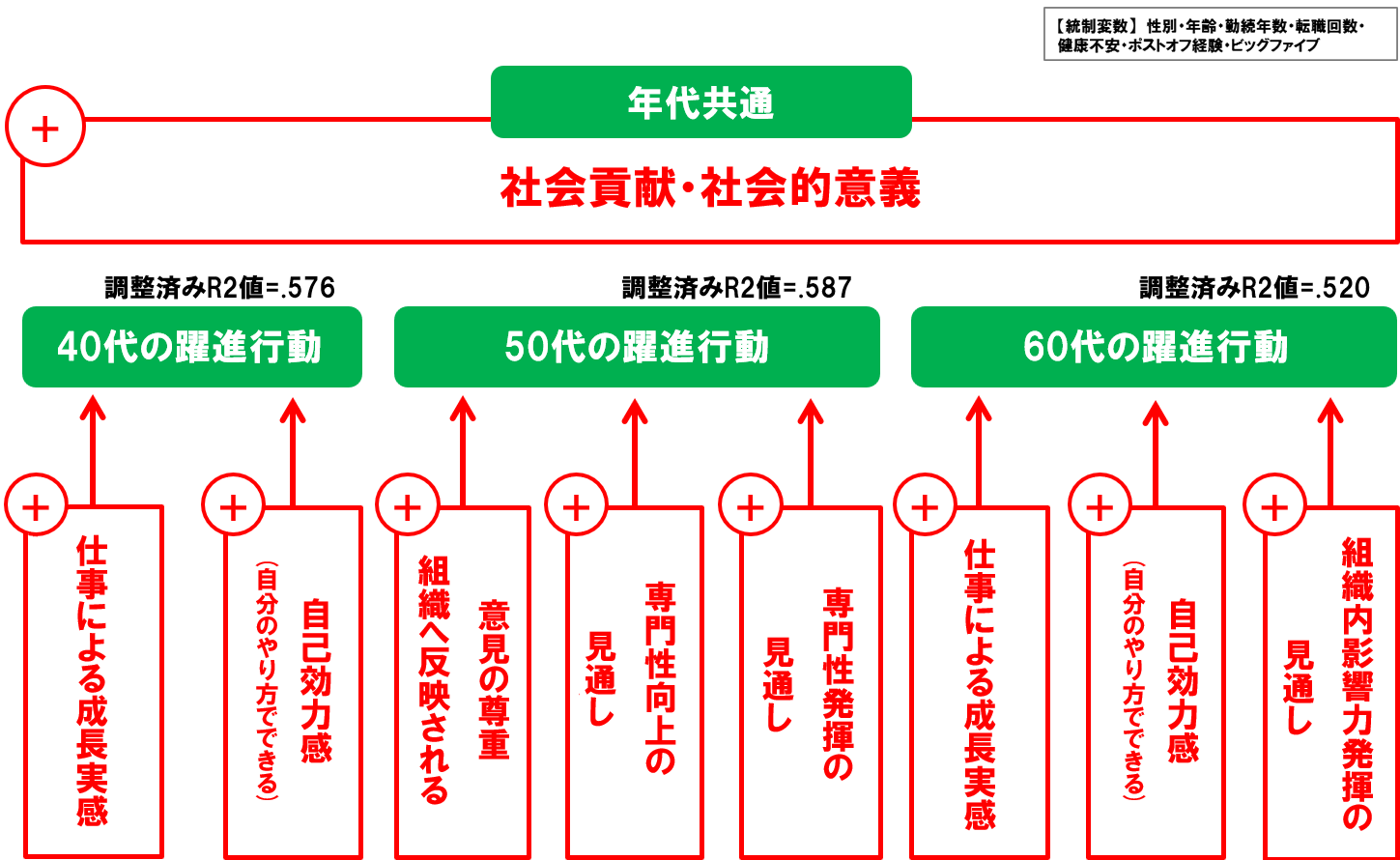
From this, we can see that how people develop an “internal career perspective” during their 40s is an important point in career support measures that encourage advancement.
3. Career support required for a shift to “internal career”
The results of an analysis of the relationship between career support participation and advancement behavior (Figure 4) show that in their 40s, those who have the opportunity to participate in career counseling are more likely to take action to advance their careers.
On the other hand, it was also found that those who had not attended any career training had a negative impact on their career advancement behavior, suggesting how important it is to have an opportunity to reconsider your approach to your career at this stage in your life.
Figure 4: Career support that encourages career advancement
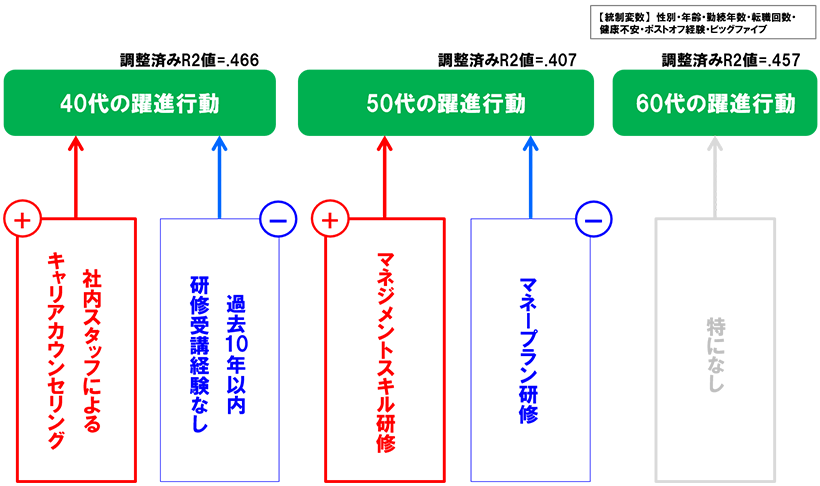
So, what is the current situation regarding career support in companies? Recently, it seems that more and more companies are introducing systems where career counselors are stationed on-site and employees can voluntarily consult with them about their careers, but the results of the survey show that this is not necessarily sufficient. According to the results of the survey shown in Figure 5, which shows the experience of taking career support courses, it is clear that only around 10% of people have had the opportunity to take courses on career inventory or career counseling. It seems that there is still room for improvement in the career support that companies should provide for middle-aged and senior workers, whose attitudes towards their careers change significantly.
Figure 5: Experience of taking career support courses
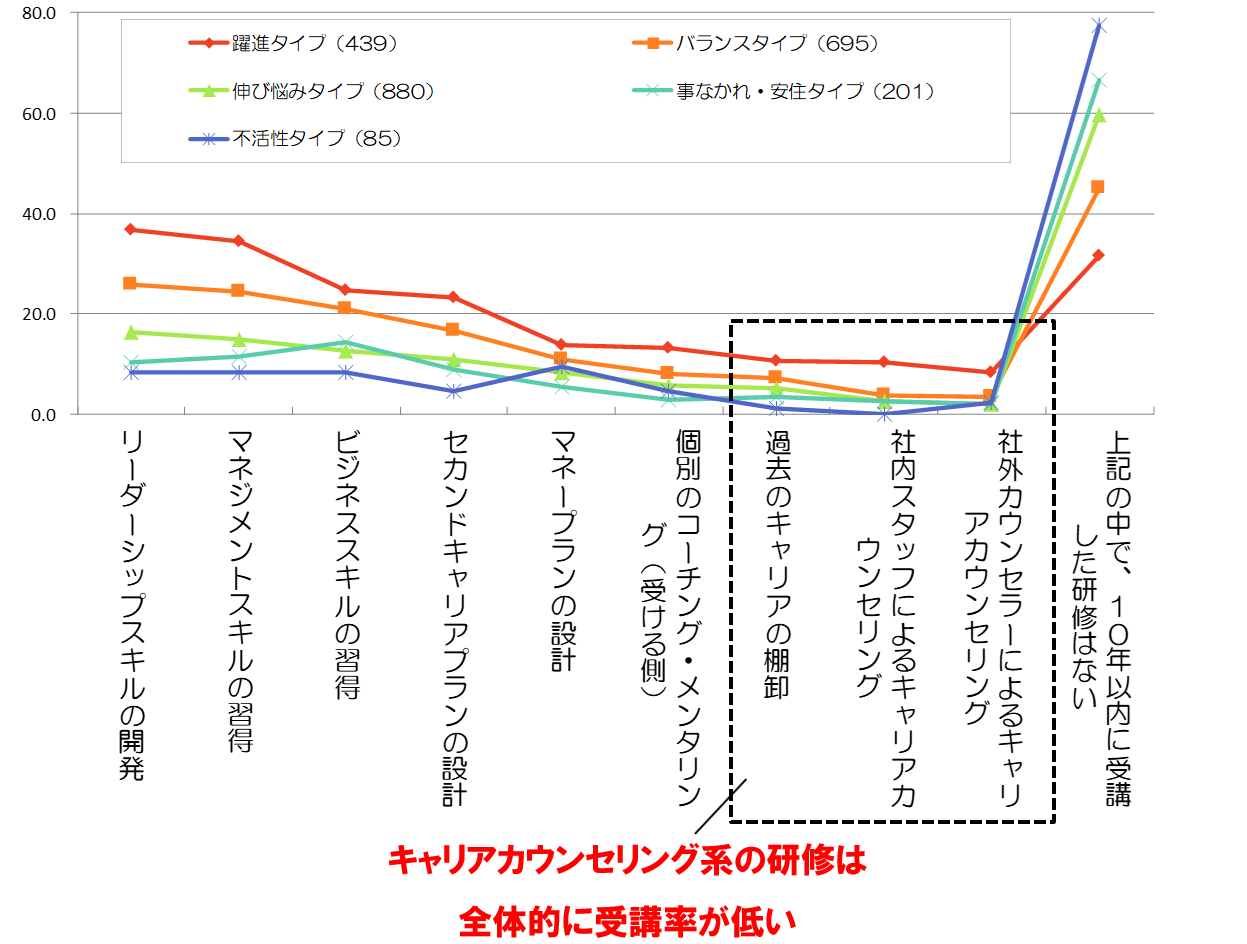
Summary: Companies should provide career support from the early 40s, the gateway for middle-aged and senior workers
When we think of career support for middle-aged and senior workers that is generally provided by companies, many people probably think of things like “money planning training to think about life planning after retirement” for people in their mid-50s who are approaching retirement age. However, what the survey results make clear is the importance of providing career support from the early 40s, which is the gateway for middle-aged and senior workers. Providing employees with the opportunity to take a deep look at their own careers and prepare for future career changes during the early 40s, a time when there is a significant change in the way people think about work and careers, is not only positive for individual career development, but also has important significance from a management perspective in terms of encouraging breakthroughs and improving work performance.
As for the content of career support for middle-aged and senior workers in their 40s, who are at the start of their careers, it is not enough to simply provide the kind of career training that has been done in the past at each company, such as taking stock of one's career and discovering one's strengths. It is necessary to provide opportunities to reconsider the social significance of one's work and the rewards of work for oneself. Furthermore, it is also important for companies to provide opportunities for employees to think about what kind of working style is desirable for them, by looking at their future careers and facing up to the reality of the possible 'inconveniences' they may face in the near future, such as demotion and pay cuts due to the mandatory retirement age system.
In this article, we have looked at the career support that companies should be providing to encourage middle-aged and senior workers in their 40s to 60s to make a breakthrough. Next time, we will be looking at the “mandatory retirement age system”. Please look forward to it.
Survey Overview
| Persol Research and Consulting / Hosei University Ishiyama Laboratory ”Middle-aged and Senior Workers' Advancement Survey" |
|
|---|---|
| Survey Method | Internet survey using survey company monitors |
| Survey participants | 2,300 businesspeople who meet the following requirements (1) Men and women aged 40 to 69 who work for companies with 300 or more employees (2) Full-time employees (including those rehired after retirement in their 60s) |
| Survey period | May 12th - 14th, 2017 |
| Survey implementer | Persol Research and Consulting Co., Ltd. / Ishiyama Laboratory, Hosei University |
When quoting, please clearly indicate the source.
Example of source citation: Persol Research and Consulting Co., Ltd. / Ishiyama Laboratory, Hosei University “Middle-aged and Senior Workers' Advancement Survey”
関連コンテンツ
-

歪んで輸入された日本のMBOと副作用
-

時代に合った転勤制度に見直すための5つのポイント
-

不本意な転勤を拒む時代。転勤制度があるだけで離職リスクが高まる
-
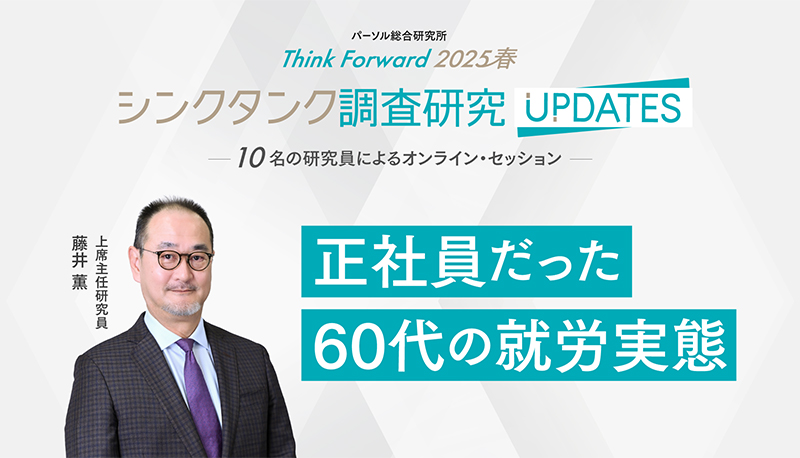
正社員だった60代の就労実態
-
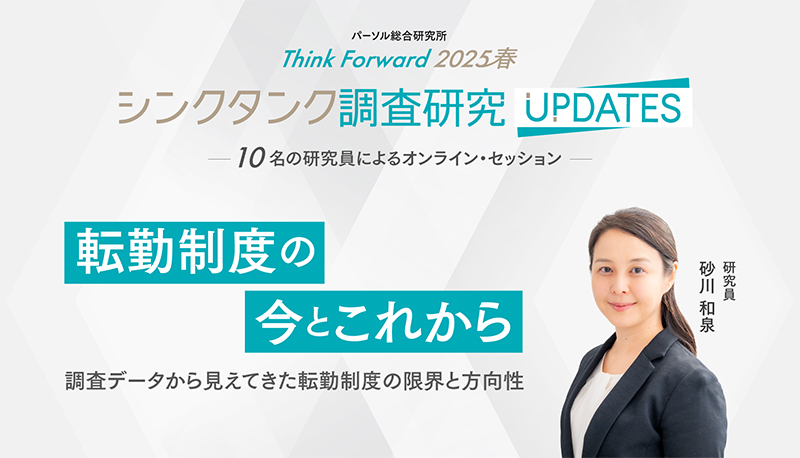
『転勤制度』の今とこれから~調査データから見えてきた転勤制度の限界と方向性~
-

転勤の有無は採用に影響するのか―転勤がない企業は給与が20%高い企業よりも魅力的
-

転勤制度の限界、ライフスタイルの変化がもたらす転勤制度見直しの必要性
-

60代が就業継続を選ばなかった理由と企業の対応策とは
-

調査研究要覧2024年度版
-
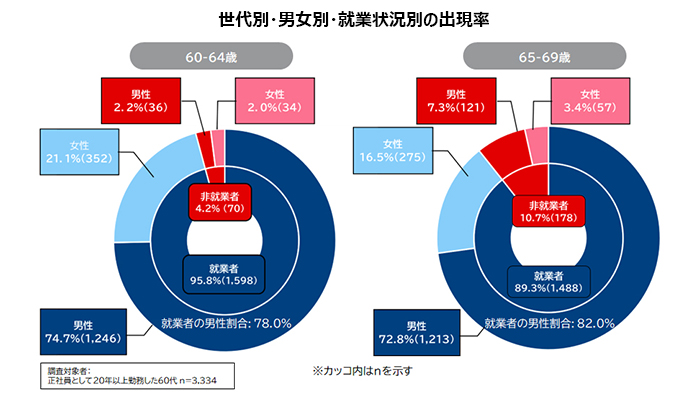
「正社員として20年以上勤務した60代」の就労実態調査
-
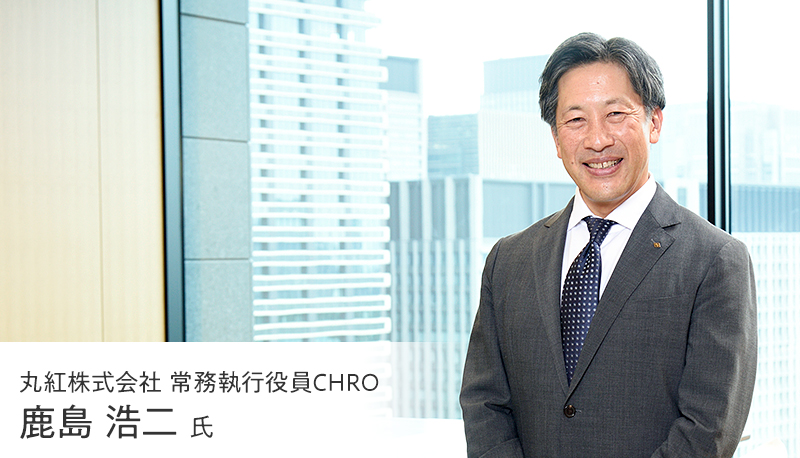
《人材の力を組織の力に》変革後も制度を改善し続け 人材の成長と組織貢献を最大化
-

高齢者の就業意欲を削ぐ「在職老齢年金制度」 ~制度見直しで労働力増加は見込まれるか~
-

65歳以上の継続雇用に企業が慎重なのはなぜか ー働き続けたいシニア人材活躍のヒント
-
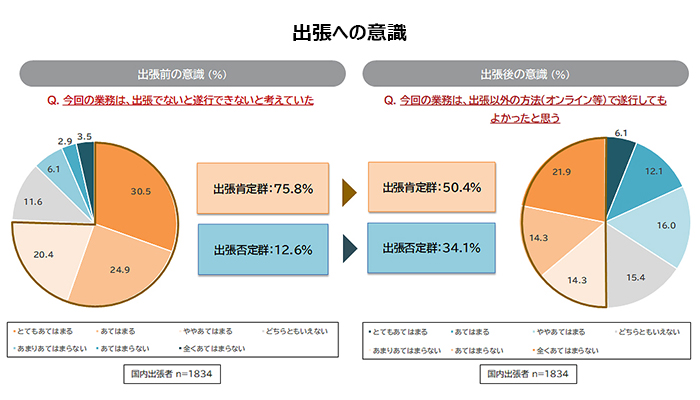
出張に関する定量調査
-
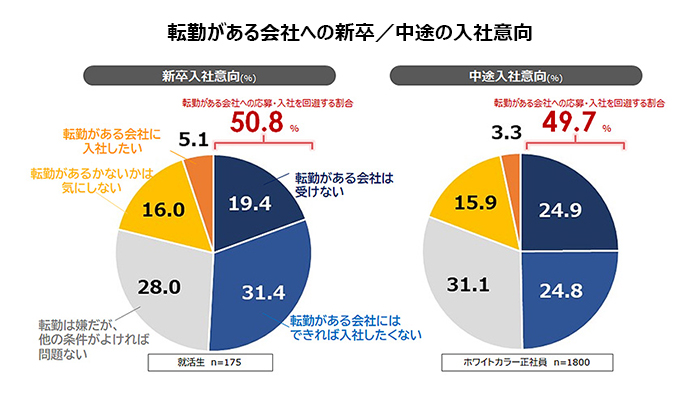
転勤に関する定量調査
-
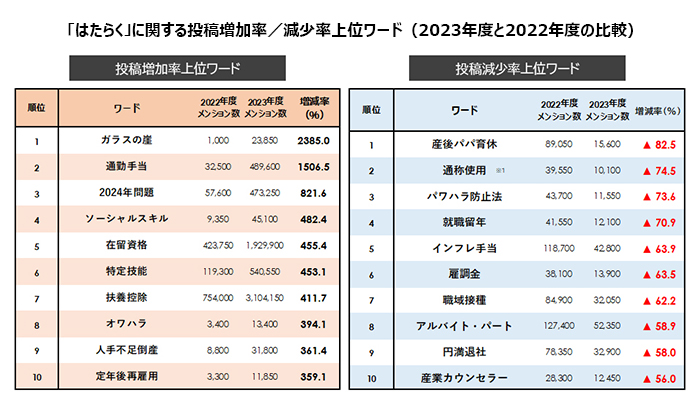
はたらくソーシャル・リスニング/24年4月
-

男性育休の推進には、前向きに仕事をカバーできる「不在時マネジメント」が鍵
-

男性が育休をとりにくいのはなぜか
-

男性の育休取得をなぜ企業が推進すべきなのか――男性育休推進にあたって押さえておきたいポイント
-

「ジョブ型」や「キャリア自律」で異動配置はどう変わるのか
-

日本的ジョブ型をどう捉えるか
-
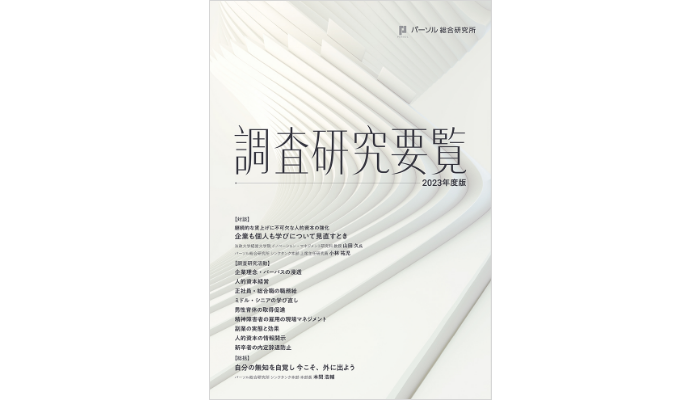
調査研究要覧2023年度版
-

ミドル・シニア就業者の趣味の学習実態と学び直しへの活用法
-

How an organizational culture in which adults continue to learn (learning culture) should be fostered: Based on a fact-finding survey on relearning targeting middle-aged and senior workers
-

大人が学び続ける組織文化(ラーニング・カルチャー)をいかに醸成するか ~ミドル・シニア就業者の学び直しの実態調査より~
-
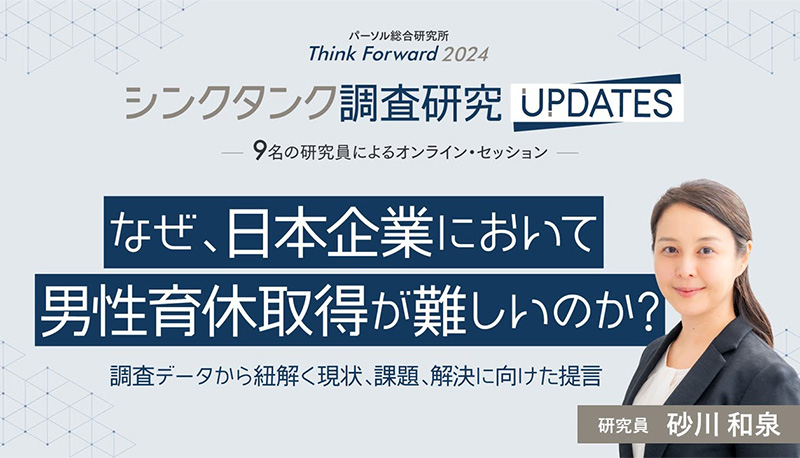
なぜ、日本企業において男性育休取得が難しいのか? ~調査データから紐解く現状、課題、解決に向けた提言~
-
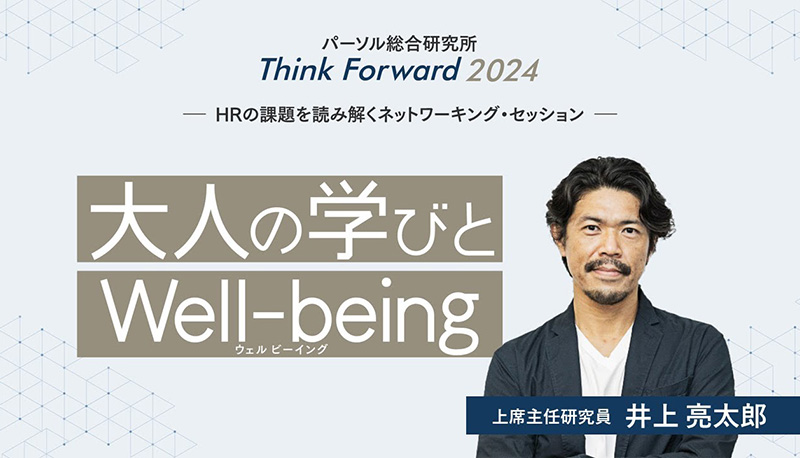
大人の学びとWell-being(ウェルビーイング)
-
![ミドル・シニアの学びと職業生活についての定量調査[PART2 趣味の学習の実態・効果]](/thinktank/assets/idx_middle-senior-learning2_065.jpg)
ミドル・シニアの学びと職業生活についての定量調査[PART2 趣味の学習の実態・効果]
-

Changes in senior workers as tracked by surveys over time
-

経年調査から見る働くシニア就業者の変化
-
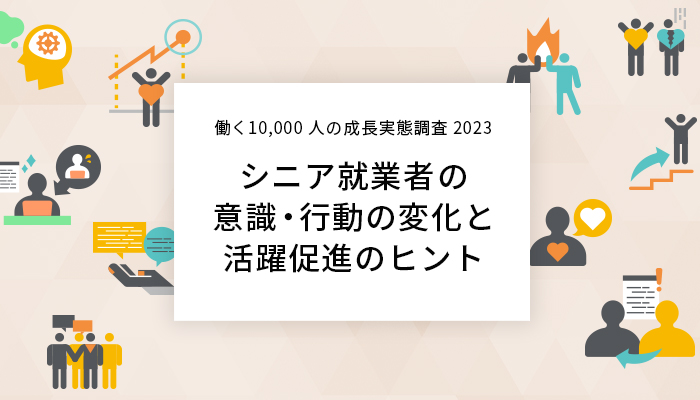
シニア就業者の意識・行動の変化と活躍促進のヒント
-
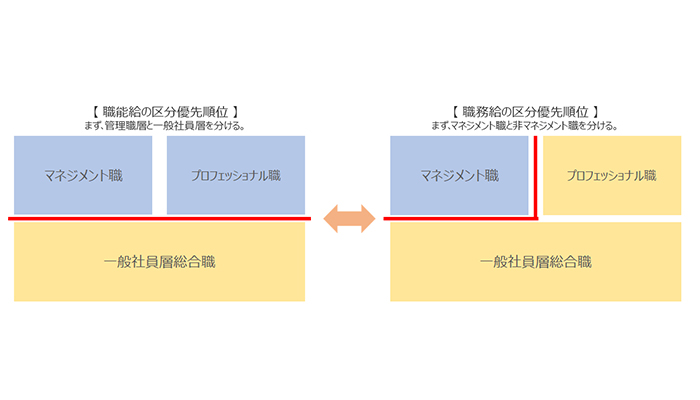
職務給に関するヒアリング調査
-
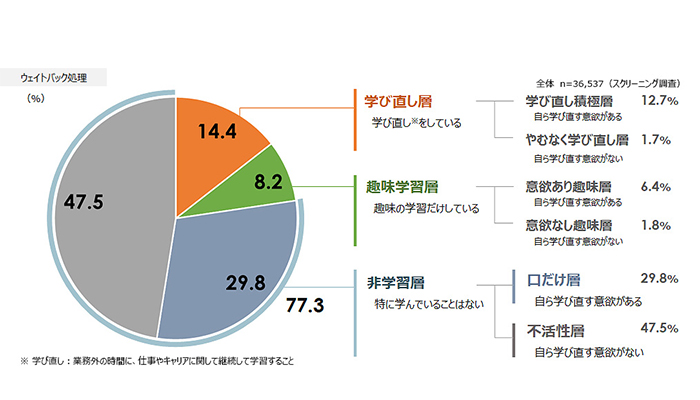
ミドル・シニアの学びと職業生活に関する定量調査
-
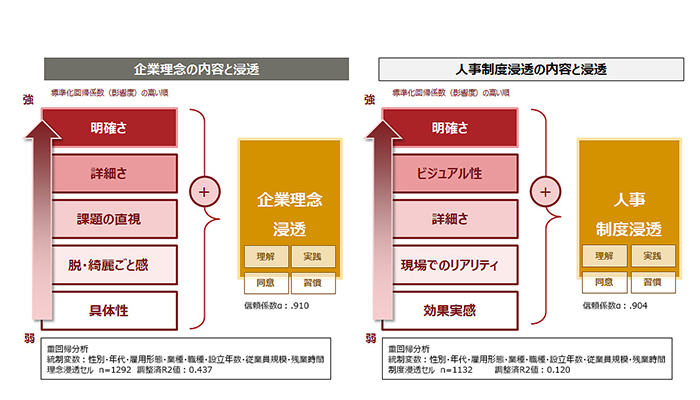
企業理念と人事制度の浸透に関する定量調査
-
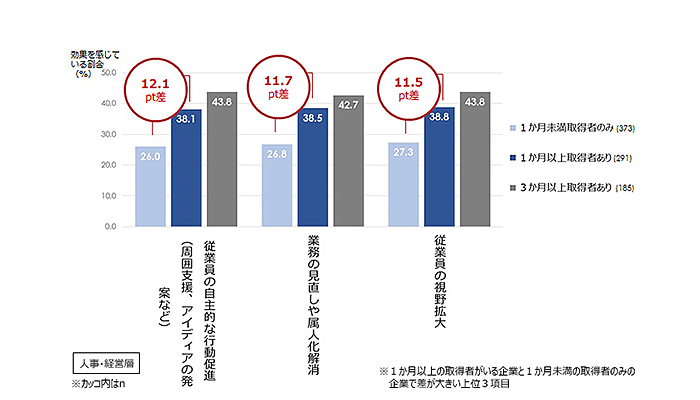
男性育休に関する定量調査
-

企業の競争力を高めるために ~多様性とキャリア自律の時代に求められる人事の発想~
-
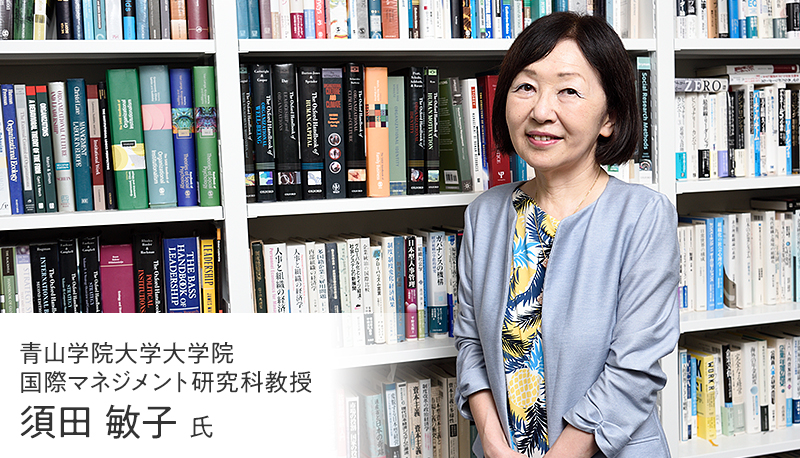
ガラパゴス化した日本の人事制度を「補完性」の観点から国際比較分析
-

2023年版 人事が知っておきたい 法改正のポイント - 育児休業取得率の公表/中小企業の割増賃金率の引き上げ/男女間賃金格差の開示義務
-
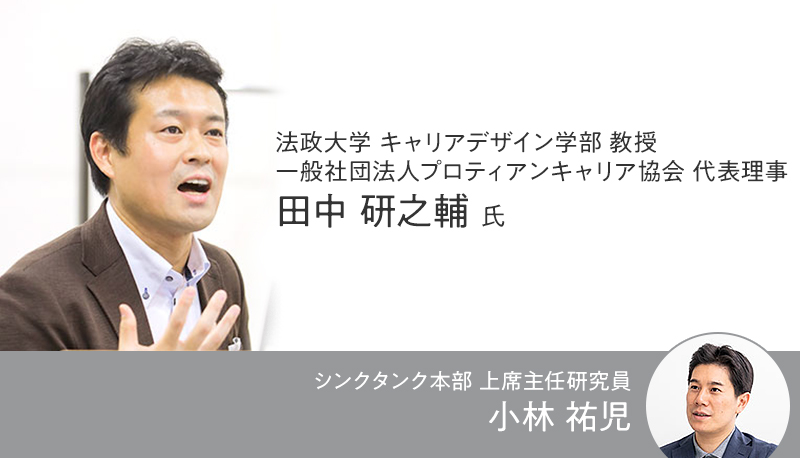
人事は、いかにミドル・シニアを活性化させていくべきか 待ったなしの今、取り組みへのポイントは?
-
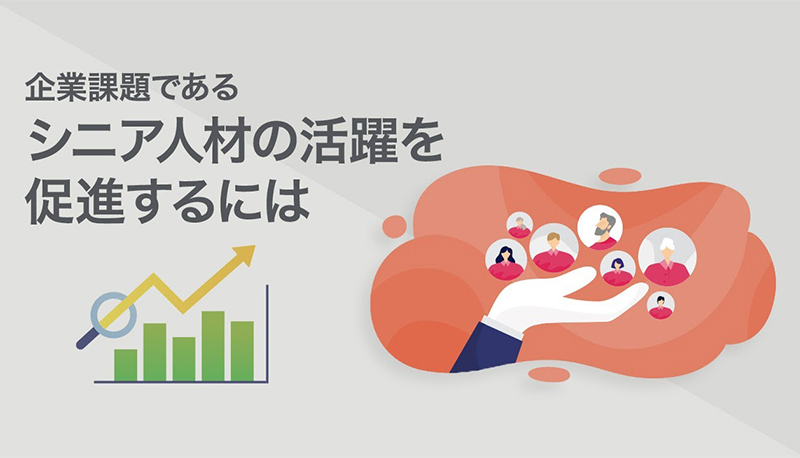
企業課題であるシニア人材の活躍を促進するには
-

What constitutes an approach to human resources management that promotes reskilling for workers?
-

従業員のリスキリングを促進する人材マネジメントとは
-

従業員のリスキリングを支える「3つの学び」とは
-

人的資本の情報開示の在り方 ~無難な開示項目より独自性のある情報開示を~
-
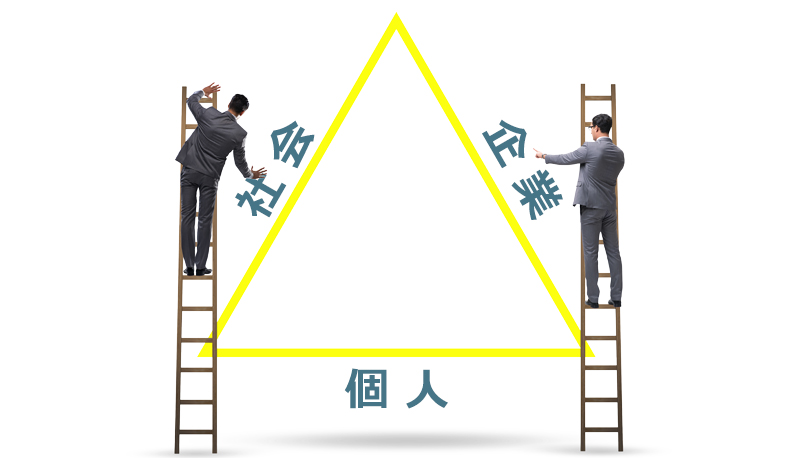
人的資本経営の実現に向けた日本企業のあるべき姿 ~人的資本の歴史的変遷から考察する~
-

特別号 HITO REPORT vol.11『「シニア人材」活性化のカギ ~70歳就業時代に向けた高齢者雇用の在り方を探る~』
-

Change in the growth orientation of employees in their forties What is needed to allow middle-aged workers in their forties to continue to experience growth at work?
-

40代社員の成長志向に変化 40代ミドル層が仕事で成長を実感し続けるには?
-

Performance and rehiring of senior employees What does human resources management supporting the performance and motivation of senior workers look like?
-

シニア社員の活躍と再雇用課題 シニア人材のパフォーマンス・モチベーションを支える人事管理とは?
-
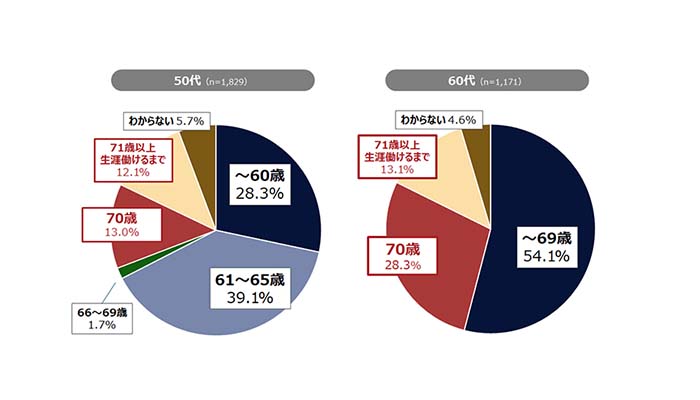
シニア従業員とその同僚の就労意識に関する定量調査
-

「日本型雇用の先にある人事の姿とは?戦略的人的資源管理から見えてくること」~第3回目:戦略人事となるために~
-

「日本型雇用の先にある人事の姿とは?戦略的人的資源管理から見えてくること」~第2回目:古典理論から見えてくる今の姿~
-

ジョブ型人事が加速させるキャリアデベロップメントプラン
-
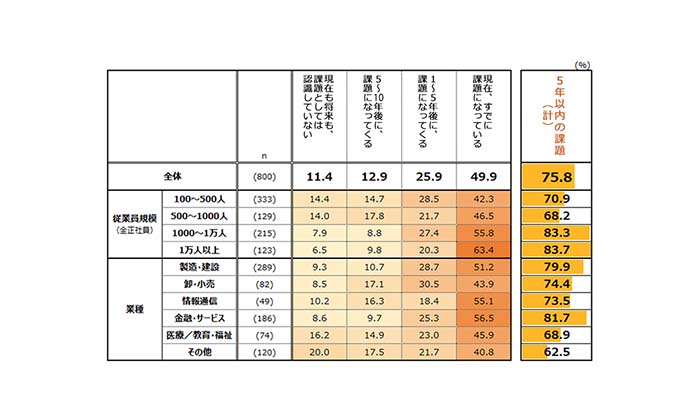
企業のシニア人材マネジメントに関する実態調査(2020)
-
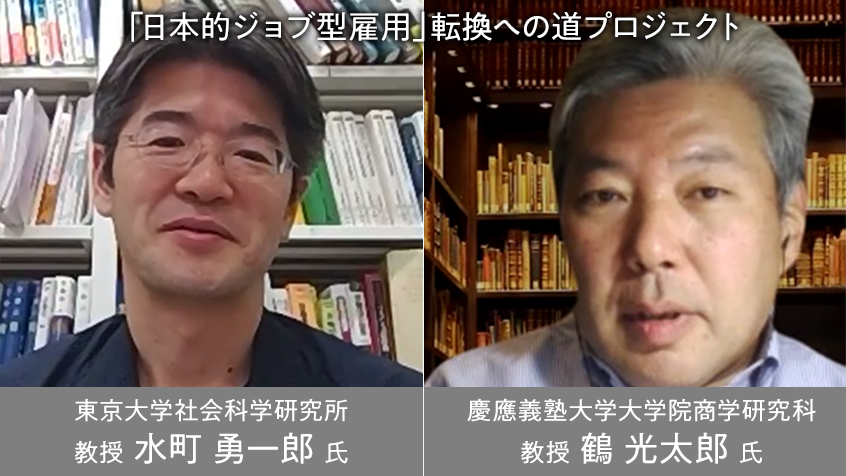
日本的ジョブ型雇用における人事機能の課題
-
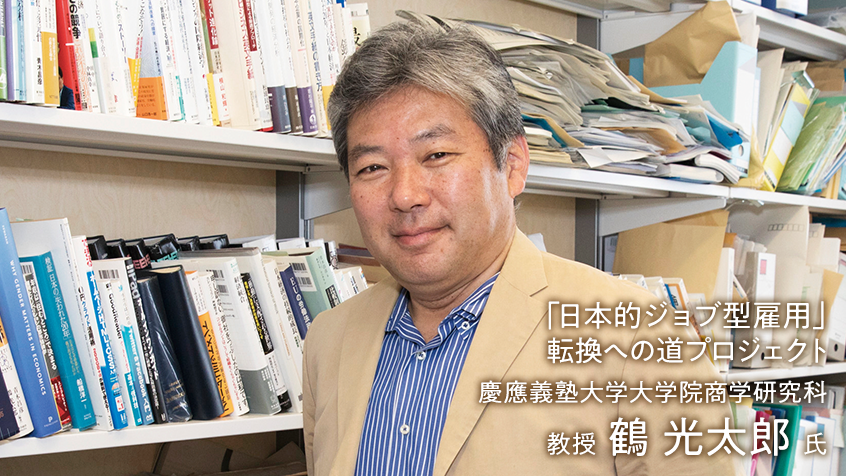
日本企業における日本的ジョブ型雇用転換の目的と課題とは?
-
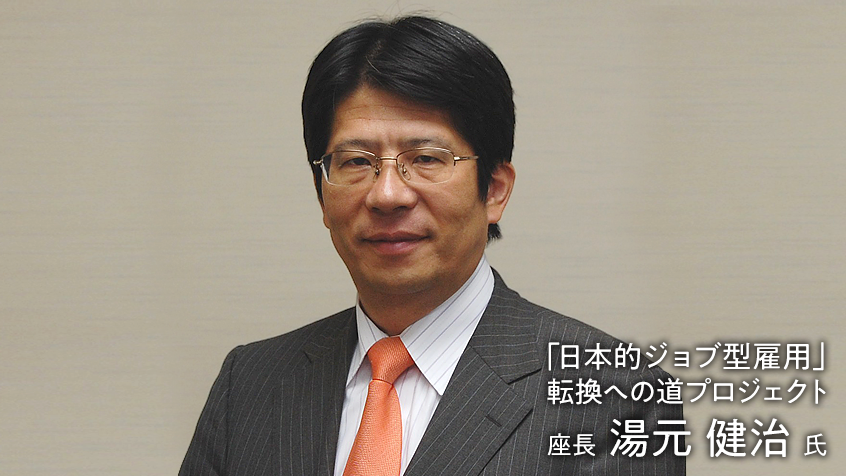
日本的ジョブ型雇用の考察
-
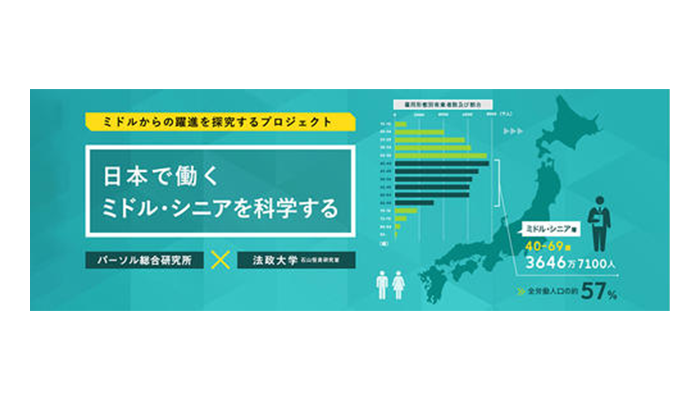
日本で働くミドル・シニアを科学する
-

数年後に迫った大量定年予備軍とどう向き合う?「定年後再雇用」における躍進を見据えた備えと支え
-

役職定年制度の運用実態とその功罪~働く意欲を減退させる「負の効果」を躍進に変える鍵とは~
-

ミドル・シニア層の約4割を占める「伸び悩みタイプ」とは? 50代前半に多い躍進停滞層の特徴
-

躍進するミドル・シニアに共通する5つの行動特性
-

「働かないオジサン」は本当か?データで見る、ミドル・シニアの躍進の実態
-

Labor shortage of 6.44 million workers: four proposed solutions (labor market projections for 2030)
-

644万人の人手不足~4つの解決策の提言~(労働市場の未来推計2030)
-
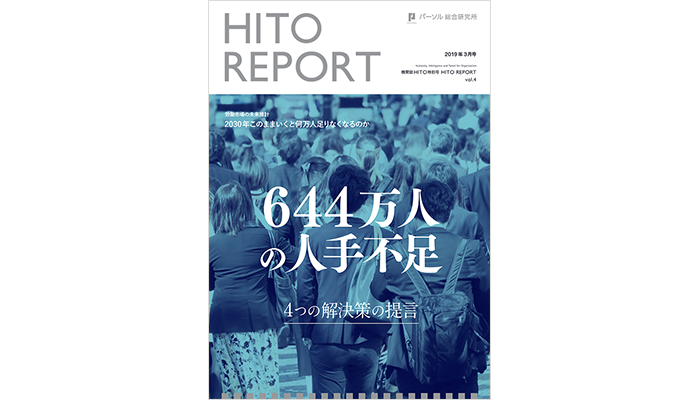
特別号 HITO REPORT vol.4『労働市場の未来推計2030 ~644万人の人手不足~』
-
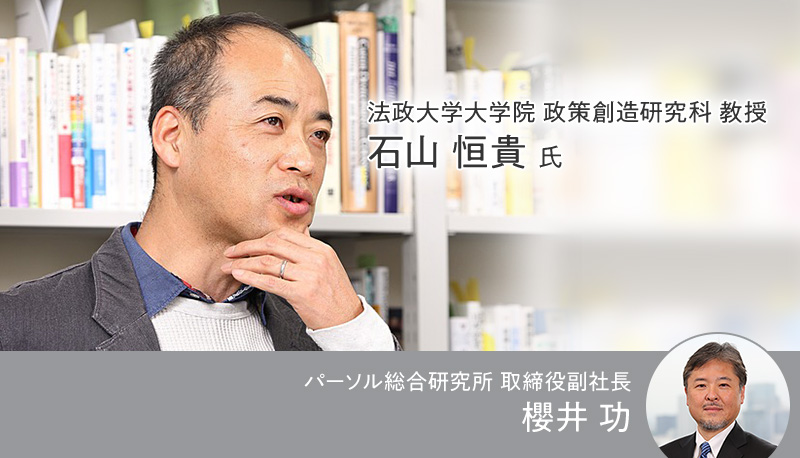
【42.5歳の壁】仕事ができる人ほど危険な"キャリアの罠"
-
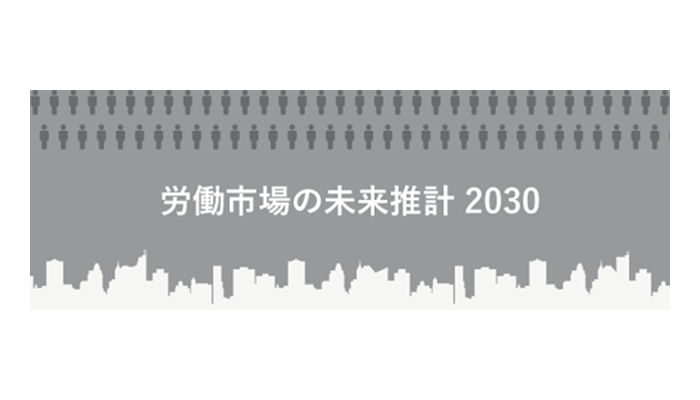
労働市場の未来推計 2030
-

50代からではもう遅い?40代から始めるキャリア支援のススメミドル・シニア躍進のために企業が取り組むべきこと
-

40~60代のミドル・シニアを部下に持つ年下上司に求められる『年齢逆転マネジメント』のヒント いずれ来たる「上司は年下に、部下は年上になる日」にむけて
-

労働市場の今とこれから 第8回 生産性向上の鍵を握るミドル・シニアの躍進
-

HITO vol.12『ミドル・シニア社員の新時代 ~躍進のために個人と会社がすべきこと~』
-

キャリアの曲がり角は42.5歳ミドル・シニア正社員と成長の関係
-

アルバイト職場のシニア人材活用をどう進めるか〈定着編〉
-

アルバイト職場のシニア人材活用をどう進めるか〈採用編〉
-

正社員の価値発揮を阻害する人事制度上の3つの課題

